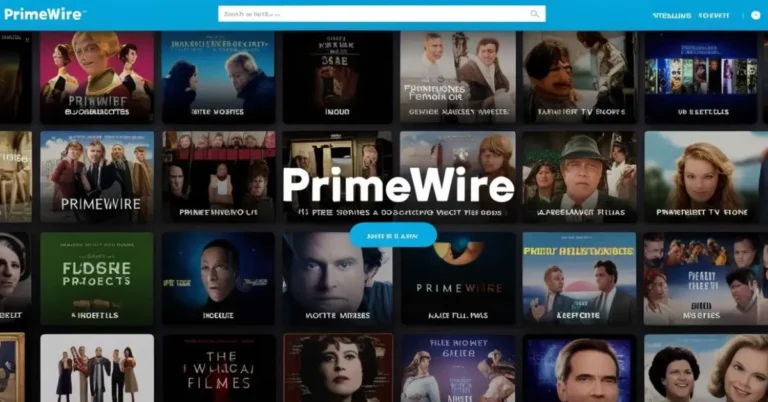News
Sukıtır: Exploring the Multifaceted World of Turkish Street Culture
Published
3 weeks agoon
By
Amolia
In the vibrant tapestry of Turkish street culture, certain terms and trends emerge that encapsulate the spirit and dynamics of its urban life. One such term that has gained popularity is “sukıtır.” This word, though simple in appearance, has evolved to represent a variety of concepts and phenomena within the street culture of Turkey. To understand “sukıtır,” we must delve into its origins, its various uses, and the cultural significance it holds in contemporary Turkish society.
The Origins of Sukıtır
Linguistic Roots
The term “sukıtır” is derived from the Turkish language, where “su” means water and “kıtır” implies crunchiness or crispiness. However, the literal translation does not fully capture the essence of how the term is used in everyday language. Over time, “sukıtır” has taken on a more nuanced meaning, influenced by various social and cultural factors.
Evolution of Meaning
Initially, “sukıtır” may have been used to describe a type of food or snack, given its etymological components. However, like many colloquial terms, it has evolved beyond its literal sense. In contemporary Turkish slang, “sukıtır” is often used to refer to someone who is stylish, cool, or trendy. It has become a compliment, a way to acknowledge someone’s fashion sense or charisma.
Sukıtır in Turkish Street Culture
Fashion and Style
In the bustling streets of Istanbul, Ankara, and other major Turkish cities, fashion plays a significant role in expressing individual identity. “Sukıtır” is a term frequently heard in these urban settings, where young people are constantly seeking to set themselves apart through their clothing and accessories. The concept of being “sukıtır” involves a keen sense of style, often characterized by a mix of traditional Turkish elements and modern, global fashion trends.
Streetwear Influence
The influence of streetwear on Turkish fashion cannot be understated. Brands such as Supreme, Off-White, and local Turkish designers have contributed to a vibrant streetwear scene. Being “sukıtır” in this context means staying ahead of the curve, embracing unique styles, and incorporating bold statements into one’s wardrobe. This fusion of East and West in fashion is a hallmark of being truly “sukıtır.”
Music and Art
The cultural landscape of Turkey is enriched by its music and art scenes, where “sukıtır” also finds relevance. Musicians and artists who embody the spirit of innovation and creativity are often described as “sukıtır.” This term signifies more than just aesthetic appeal; it reflects an attitude of defying norms and pushing boundaries.
Music Scene
In the realm of music, “sukıtır” is associated with genres like hip-hop, rap, and electronic music. These genres have gained immense popularity among Turkish youth, who resonate with the themes of rebellion, empowerment, and social change. Artists such as Ceza, Ezhel, and Şanışer are often labeled as “sukıtır” for their groundbreaking work and ability to connect with audiences on a profound level.
Street Art
Street art is another area where “sukıtır” thrives. In cities like Istanbul, graffiti and murals adorn the walls, turning urban spaces into canvases for artistic expression. Street artists who create visually striking and thought-provoking pieces are celebrated as “sukıtır.” Their work challenges societal norms and inspires dialogue, contributing to the dynamic street culture of Turkey.
Sukıtır as a Social Phenomenon
Youth Culture
“Sukıtır” has become emblematic of youth culture in Turkey, representing the aspirations and values of the younger generation. It embodies the desire to stand out, to be unique, and to make a mark on the world. This pursuit of individuality is evident in various aspects of life, from fashion choices to career paths.
The Role of Social Media
Social media platforms like Instagram, TikTok, and Twitter play a crucial role in amplifying the concept of “sukıtır.” Influencers and content creators use these platforms to showcase their style, share creative content, and engage with a broader audience. The digital landscape allows the “sukıtır” aesthetic to reach global audiences, fostering cross-cultural exchanges and inspiring new trends.
Societal Impact
The impact of “sukıtır” extends beyond individual expression to influence broader societal norms and attitudes. It challenges traditional notions of conformity and encourages people to embrace their authentic selves. This shift is particularly significant in a society where cultural norms and expectations have historically played a dominant role.
The Future of Sukıtır
Evolution of Meaning
As with any cultural term, the meaning of “sukıtır” is likely to continue evolving. It will adapt to new trends, technologies, and societal changes, reflecting the dynamic nature of Turkish street culture. The ongoing dialogue between tradition and modernity will shape the future iterations of what it means to be “sukıtır.”
Global Influence
The global reach of “sukıtır” is expected to grow as Turkish culture continues to gain international recognition. Turkish artists, designers, and influencers are increasingly making their mark on the global stage, bringing the essence of “sukıtır” to diverse audiences. This cultural exchange will further enrich the concept, infusing it with new perspectives and interpretations.
Conclusion
“sukıtır” is a term that encapsulates the spirit of Turkish street culture, embodying elements of style, creativity, and individuality. It reflects the aspirations and values of the younger generation, challenging societal norms and embracing diversity. As a cultural phenomenon, “sukıtır” is more than just a trend; it is a testament to the dynamic and ever-evolving nature of urban life in Turkey. As we look to the future, the concept of “sukıtır” will undoubtedly continue to inspire and influence, leaving an indelible mark on both local and global cultures.
You may like
News
No Longer a Fan of NYT: A Comprehensive Analysis
Published
4 days agoon
November 9, 2024By
Amolia
Why some readers are turning away from The New York Times. This in-depth analysis explores the reasons behind the declining popularity of NYT, including political bias, journalistic integrity, and reader dissatisfaction.
Introduction
The New York Times (NYT) has long been considered one of the most reputable newspapers in the world. However, in recent years, a growing number of readers have expressed their dissatisfaction with the publication. This shift in perception has led to a significant number of former fans distancing themselves from the NYT. This article delves into the reasons behind this change, examining factors such as perceived political bias, issues of journalistic integrity, and overall reader dissatisfaction.
Perceived Political Bias
One of the primary reasons cited by former NYT readers is the perception of political bias. The NYT has faced criticism from both sides of the political spectrum, with some accusing it of leaning too far to the left while others claim it panders to the establishment. This perceived bias has led to a loss of trust among readers who expect impartial reporting.
Left-Leaning Accusations
Critics on the right often argue that the N YT has a liberal bias, pointing to its editorial choices and the tone of its reporting. They claim that the newspaper frequently prioritizes progressive viewpoints and dismisses conservative perspectives. This perception has alienated conservative readers who feel that their views are not represented fairly.
Establishment Allegations
On the other hand, some on the left accuse the NYT of catering to the establishment and being reluctant to challenge powerful interests. They argue that the newspaper’s coverage of certain issues, such as corporate influence and government policies, lacks the necessary critical analysis. This has led to disillusionment among readers who seek more radical or anti-establishment perspectives.
Issues of Journalistic Integrity
Journalistic integrity is another significant concern for former NYT fans. Instances of factual inaccuracies, sensationalism, and conflicts of interest have eroded the trust that many readers once had in the publication.
Factual Inaccuracies
There have been notable instances where the N YT has published stories containing factual errors. While retractions and corrections are issued, the initial impact of these inaccuracies can be damaging. Readers expect reliable and accurate information, and repeated errors can undermine confidence in the newspaper’s credibility.
Sensationalism
The rise of digital media has put pressure on traditional newspapers to attract online readership through engaging content. Some former readers argue that the NYT has increasingly resorted to sensationalism to boost traffic. This approach, characterized by exaggerated headlines and emotive language, can compromise the quality and objectivity of reporting.
Conflicts of Interest
Concerns have also been raised about potential conflicts of interest within the NYT’s reporting. For example, connections between journalists and political figures or corporate entities can create perceptions of bias. Transparency about such relationships is crucial, and any lack thereof can damage the newspaper’s reputation for integrity.
Reader Dissatisfaction
Overall reader dissatisfaction encompasses a range of issues, from the quality of content to the accessibility of the newspaper. Former fans often cite a combination of factors that have contributed to their decision to stop reading the NYT.
Quality of Content
Some readers feel that the quality of the NYT’s content has declined over the years. They argue that the newspaper’s investigative journalism and in-depth reporting have been overshadowed by opinion pieces and less rigorous news coverage. This perceived decline in quality has led to frustration among those who value thorough and objective journalism.
Paywall and Accessibility
The NYT’s digital paywall is another point of contention. While many understand the need for the newspaper to generate revenue, the paywall can be a barrier for readers who cannot afford a subscription. This has led to criticism that the N YT is prioritizing profit over public access to information.
Editorial Decisions
Editorial decisions, such as which stories to prioritize and how to frame certain issues, have also been a source of dissatisfaction. Readers may feel that the NY T’s editorial stance does not align with their values or that important stories are overlooked in favor of more sensational topics. These decisions can influence readers’ perception of the newspaper’s integrity and relevance.
Impact of Social Media
The rise of social media has significantly impacted how people consume news, and this shift has had implications for the NYT as well. Social media platforms offer alternative sources of news and information, allowing readers to bypass traditional media outlets like the NYT.
Alternative News Sources
Social media platforms have democratized the distribution of news, enabling independent journalists and smaller news outlets to reach a wider audience. This has provided readers with a broader range of perspectives and alternatives to mainstream media. Some former NYT readers have turned to these alternative sources for news that they feel is more unbiased and representative of their views.
Influence of Influencers
Social media influencers, including political commentators and opinion leaders, also play a role in shaping public opinion. These influencers often critique mainstream media, including the NYT, and highlight perceived biases or shortcomings. Their large followings can amplify dissatisfaction with traditional news outlets and contribute to the decline in the NYT’s popularity.
The Role of Media Literacy
Media literacy, or the ability to critically analyze and evaluate media content, is an important factor in the changing perception of the NYT. As readers become more media literate, they are better equipped to identify biases, fact-check information, and seek out diverse perspectives.
Critical Consumption
Media literacy encourages readers to engage with news content critically, questioning the sources, motives, and accuracy of the information presented. This critical approach can lead to greater scrutiny of the NYT’s reporting and contribute to the perception that the newspaper is not meeting the standards of objective journalism.
Diverse Perspectives
Increased media literacy also drives readers to seek out diverse perspectives and alternative news sources. This can result in a more informed and balanced understanding of current events, but it can also lead to the fragmentation of news consumption. Former NYT readers may turn to multiple sources to get a more comprehensive view of the news, rather than relying on a single publication.
FAQs
Why do some readers perceive the NYT as politically biased?
Many readers perceive the NYT as politically biased due to its editorial choices and the tone of its reporting. Critics argue that the newspaper often prioritizes progressive viewpoints or caters to the establishment, leading to a loss of trust among readers with differing perspectives.
What are some examples of issues with journalistic integrity at the NYT?
Issues with journalistic integrity at the NYT include instances of factual inaccuracies, sensationalism, and potential conflicts of interest. These concerns have eroded the trust that many readers once had in the publication.
How has social media impacted the popularity of the NYT?
Social media has provided readers with alternative sources of news and information, allowing them to bypass traditional media outlets like the NYT. Influencers and independent journalists on social media platforms often critique mainstream media, contributing to the decline in the NYT’s popularity.
What role does media literacy play in the changing perception of the NYT?
Media literacy, or the ability to critically analyze and evaluate media content, plays a significant role in the changing perception of the NYT. As readers become more media literate, they are better equipped to identify biases, fact-check information, and seek out diverse perspectives.
Why do some readers feel that the quality of the NYT’s content has declined?
Some readers feel that the quality of the NYT’s content has declined due to a perceived shift away from investigative journalism and in-depth reporting towards opinion pieces and less rigorous news coverage. This perceived decline in quality has led to frustration among those who value thorough and objective journalism.
How does the NYT’s paywall affect reader satisfaction?
The NYT’s digital paywall can be a barrier for readers who cannot afford a subscription, leading to criticism that the newspaper is prioritizing profit over public access to information. This has contributed to overall reader dissatisfaction.
Conclusion
The decline in the popularity of The New York Times among some readers can be attributed to a combination of factors, including perceived political bias, issues of journalistic integrity, and overall reader dissatisfaction. The impact of social media and the rise of media literacy have also played significant roles in shaping public perception. While the NYT remains a respected publication, it faces challenges in maintaining the trust and loyalty of its readership in an evolving media landscape. Understanding these dynamics is crucial for both the NYT and its readers as they navigate the complexities of modern journalism.
News
Unlocking the Power of Semanticlast.com: A Complete Guide
Published
1 month agoon
October 12, 2024By
Amolia
In today’s digital age, Semanticlast.com, businesses and individuals are constantly looking for better ways to organize and present data. Check out, a powerful platform that provides innovative solutions in the world of semantic data. If you want to improve your understanding of how semantic technology can help optimize data and improve content relevance, you’ve come to the right place.
What is Semanticlast.com?
is a platform designed to use semantic technology to improve the organization of data, making information more accessible and understandable. By focusing on meaning rather than keywords, semantic technologies help businesses and users connect information in ways traditional search engines can’t. The result? More relevant and accurate results.
Whether you’re a business looking to improve your website’s search engine rankings or an individual looking to gain a deeper understanding of how semantic data works, provides the tools and resources to help you succeed.
How does semantic technology work?
Semantic technology works by understanding the relationships between different data. Instead of simply relating words or phrases, it analyzes the context, meaning, and intent behind them. This provides more accurate search results and deeper insights.
For example, if you search for “apple,” semantic technology can distinguish the company Apple from the fruit apple based on the context of your query. This makes it incredibly powerful for content discovery, information retrieval, and even data analysis.
integrates these principles into its platform, helping users and businesses create more meaningful connections between data.
Benefits of Using
Improved Search Relevance: helps websites and apps return more relevant results by understanding user intent. This results in an improved user experience and higher engagement rates.
Improved Data Organization: By structuring data semantically, users can easily find and associate information that would otherwise be hidden or overlooked.
SEO Optimization: Websites that use semantic strategies can see significant increases in search engine rankings. Google’s algorithms favor sites that can understand and respond to user intent, and helps with that.
Better user experience: By delivering more relevant and useful content, websites using can create a smoother, more intuitive experience for users.
Why Your Business Needs
No matter what industry you’re in, if you deal with data, you need a semantic platform. Semanticlast .com not only improves your SEO, but also ensures that your content is more accessible, interesting, and relevant to your users. Whether you’re looking to improve search functionality, organize data more efficiently, or simply provide a better user experience, semanticlast .com can help you achieve your goals.
Conclusion
In conclusion, semanticlast .com is a great tool for those who want to better organize data and improve their website’s search results. Using semantic technology helps people find the information they need more easily. Whether you’re a business or just someone who wants to understand how data works, this platform can make everything easier and more useful.
If you want to stay ahead of your competitors and make your content more user-friendly, semanticlast .com is the place for you. It’s easy to use and can really change the way people find and use information on your site. Give it a try and see the benefits!
FAQ
Q: What is semanticlast.com?
A: semanticlast .com is a platform that uses semantic technology to organize and enhance data, making it easier for users to find the information they need.
Q: How can semanticlast .com benefit my website?
A: It improves search engine optimization (SEO) by improving data structure, helping your site rank higher, and giving users a better experience.
Q: Is semanticlast .com easy to use?
A: Yes, the platform is designed to be user-friendly, making it easy for anyone to improve data management and website performance.
Q: Can semanticlast .com help my business grow?
A: Absolutely! By improving data organization and search rankings, semanticlast .com helps increase visibility, which can attract more customers.
Q: What types of businesses should use semanticlast .com?
A: Any business looking to improve their website’s search results, from small startups to large enterprises, can benefit from semanticlast .com.
Q: Does semanticlast .com improve SEO?
A: Yes, it improves your website’s SEO by organizing data more efficiently, resulting in better search engine rankings.
Q: Is semanticlast .com suitable for beginners?
A: Yes, semanticlast .com is designed to be simple and accessible even for those with little experience in data management.
News
Primewire: Streaming, Legal Implications, and Alternatives
Published
1 month agoon
October 12, 2024By
Amolia
In the digital age, the demand for online content consumption has grown exponentially. As the global audience craves quick access to movies, TV shows, and other forms of entertainment, several streaming platforms have emerged to cater to this demand. Among the many platforms, Primewire has garnered attention for its extensive library of films and TV series. However, Primewire exists in a gray area of legality, which has raised numerous concerns. This article will delve deep into Primewire, exploring its history, functionality, legal ramifications, and alternative options available for users seeking safe and legal streaming experiences.
History of Primewire
Primewire, originally launched as LetMeWatchThis in the early 2010s, underwent several rebrandings due to legal pressures and takedown attempts by governments and copyright holders. It evolved into 1Channel before finally adopting the name Primewire. Throughout its iterations, Primewire became a go-to site for users seeking free access to movies, TV shows, documentaries, and other video content. Its popularity surged due to its user-friendly interface and extensive catalog.
The platform, like many others in its category, functions by aggregating content from various third-party sources. Users can stream movies and series hosted on external websites. This model allowed Primewire to stay active for many years despite legal actions, as it technically doesn’t host copyrighted content but provides links to it.
However, legal authorities and copyright holders began targeting such sites aggressively, leading to periodic shutdowns and domain name changes. Despite these challenges, Primewire continues to operate under different URLs, attracting millions of users worldwide.
How Primewire Works
Primewire operates by offering links to a variety of external video hosting services. It does not host the content itself but instead functions as a catalog of available streams from other sources. Users can search for specific titles or browse through genres, years, and popularity rankings to find their desired content.
Once a user selects a movie or a TV show, Primewire provides several streaming options. These links often lead to third-party sites that host the actual video files. The user can then choose from different quality options, including SD, HD, and sometimes 4K, depending on the available source. Some links may require the user to navigate through pop-up ads or even sign up for third-party services.
Primewire offers several advantages, such as:
- Extensive Library: Primewire’s vast selection of films, including the latest releases and older classics, is a significant draw for its users.
- No Registration Required: Unlike many streaming services, Primewire does not require users to create an account, making it easy for casual visitors to browse and stream content.
- Free Access: The primary appeal of Primewire is its cost-free access to video content, contrasting sharply with paid platforms like Netflix or Hulu.
Despite these advantages, the site poses risks, as the content provided is often illegally distributed, and there are numerous potential security concerns.
Legal Implications of Using Primewire
The legality of using Primewire is a complex issue, primarily because the site itself does not host copyrighted material. However, by providing access to pirated streams, Primewire operates in a legal gray area.
Copyright Infringement
The primary issue with Primewire is that it enables users to watch pirated content, which is a violation of copyright laws. The platform circumvents legal restrictions by merely linking to content rather than hosting it. However, this practice still falls under the purview of copyright infringement, making the use of Primewire potentially illegal in many countries.
While the platform may not face the same legal scrutiny as sites that host pirated content directly, it is still a target for takedowns and lawsuits from copyright holders. In many countries, streaming copyrighted content without authorization, even if you are not downloading it, can be illegal and subject to fines or other penalties.
User Liability
For users, the legal consequences of streaming from a site like Primewire depend on their country of residence. In some countries, merely accessing pirated content is considered a copyright violation, while in others, the law focuses more on those who distribute or upload pirated material. Nonetheless, users should be aware that even passive consumption of pirated content can expose them to legal risks.
Moreover, many users might not realize that by simply accessing Primewire, they are potentially contributing to a larger problem. Piracy undermines the entertainment industry, reducing revenues for content creators, actors, and production companies.
Cybersecurity Risks
Beyond the legal risks, Primewire poses significant security risks for users. The nature of the platform, which relies on third-party links, exposes users to several dangers, including:
- Malware and Viruses: Many of the third-party hosts linked to Primewire are rife with malware. Clicking on ads or attempting to stream a video could lead to users unknowingly downloading harmful software onto their devices.
- Phishing Scams: Some third-party services linked from Primewire may require users to sign up or provide personal information, which can be exploited for phishing scams or identity theft.
- Data Privacy Concerns: Because Primewire operates in the shadows of the legal world, there are no guarantees regarding data privacy. Users could have their personal data sold to third parties or used for nefarious purposes.
Users should also consider the potential security threats when using such platforms. Employing VPNs, ad blockers, and antivirus software can mitigate some of these risks, but they do not eliminate the possibility of falling victim to malicious activities.
Primewire Alternatives: Legal and Safe Options
Given the legal and cybersecurity risks associated with Primewire, many users may want to seek safer, legal alternatives for streaming. Below are some popular alternatives that provide similar content without the associated dangers:
1. Netflix
Netflix remains one of the most popular streaming services in the world, offering a vast library of original content, movies, documentaries, and TV shows. While it is a paid service, Netflix provides a wide range of content in various genres, with frequent updates and new releases.
2. Hulu
Hulu offers a diverse range of TV shows and movies, with the added benefit of providing access to the latest episodes of popular series. Its affordable pricing plans and availability of live TV make it a great alternative to illegal streaming platforms.
3. Amazon Prime Video
Amazon Prime Video provides users with a broad selection of films and TV series, including exclusive content available only to Prime members. With the added benefit of free shipping on Amazon purchases, it is an attractive choice for many users.
4. Disney+
For fans of Disney, Pixar, Marvel, and Star Wars, Disney+ offers exclusive streaming of their vast content library. It also hosts National Geographic documentaries, making it a comprehensive platform for both family entertainment and educational content.
5. Tubi TV
Tubi is a free, ad-supported streaming service that offers a wide variety of movies and TV shows. Although users will need to sit through occasional advertisements, Tubi provides a legal and safe alternative to sites like Primewire.
6. Crackle
Crackle is another free streaming service, supported by ads, that offers a decent selection of films and TV series. It is a legitimate platform owned by Sony, and while its catalog is smaller than Netflix’s or Hulu’s, it is a great option for users looking for free, legal content.
7. Peacock TV
Peacock, NBCUniversal’s streaming service, offers a free tier with limited content, as well as premium subscriptions with access to a larger library. Its offerings include NBC shows, movies, and live events, making it a viable alternative to Primewire.
8. YouTube
YouTube, though primarily known for user-generated content, also offers a wide range of free movies, TV shows, and documentaries. Additionally, users can rent or purchase films directly from the platform.
Conclusion
While Primewire may seem like an attractive option for users looking to access movies and TV shows without paying, the risks associated with using such a site far outweigh the benefits. The legal implications, potential cybersecurity threats, and ethical concerns surrounding piracy should deter users from accessing platforms like Primewire.
Thankfully, there are plenty of legal and safe alternatives available, ranging from paid services like Netflix and Hulu to free platforms like Tubi and Crackle. By opting for legitimate streaming services, users can enjoy high-quality content without worrying about breaking the law or compromising their digital security.
In conclusion, while Primewire has carved out a space for itself in the world of free streaming, its controversial status in the legal and cybersecurity realms makes it a risky option. Users should consider their choices carefully and opt for legal streaming platforms to ensure a safer and more enjoyable viewing experience.
Trending
-

 Life style3 months ago
Life style3 months agoBest 30+ Sad Quotes in Hindi | सैड कोट्स
-

 Health3 months ago
Health3 months agoUnraveling the Mystique of Μήλε
-

 Entertainment3 months ago
Entertainment3 months agoOutline Generation: Bringing Blorbo the Shrewd 25 Hobgoblin Hides
-

 Blog3 months ago
Blog3 months ago23azo: Alternatives, Drawbacks, And Best Games to Play
-

 Entertainment3 months ago
Entertainment3 months agoNavigating NHentai.net: Tips and Tricks for a Seamless Experience
-

 Life style3 months ago
Life style3 months agoChelsea Acton: Famous Parenting Icon
-

 Health3 months ago
Health3 months agoSuwuianna: Exploring the Enigma of Wellness
-

 Tech3 months ago
Tech3 months agoA Complete Guide to Mıllıeyt and Its Benefits
